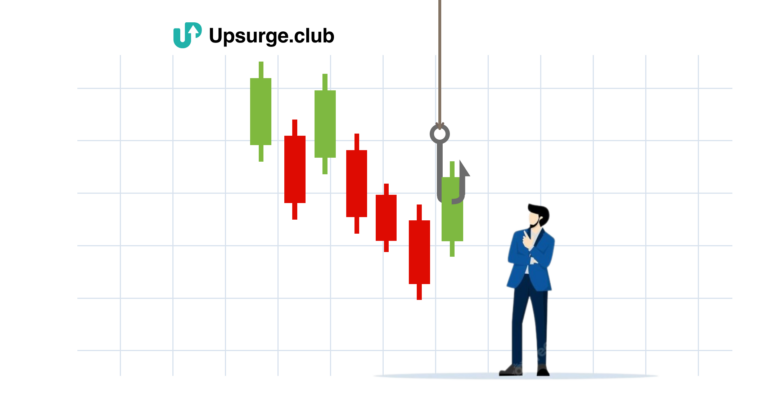Traders always lookout for effective tools and strategies to enhance their trading decisions. One such tool that has gained significant popularity among traders is the Supertrend indicator. In this blog, we will take you through the ins and outs of the Supertrend Indicator Trading Strategy. We will also provide you with the knowledge and skills to leverage this powerful tool in your trading journey.
Understanding the Supertrend Indicator
The Supertrend indicator is a versatile technical analysis tool to identify the current market trend and potential entry and exit points. It is based on a combination of price action and volatility. Hence, making it suitable for traders across different markets and timeframes. The indicator has two key components: the Supertrend line and the Stop and Reverse (SAR) dots.
The Supertrend line is plotted above or below the price chart, indicating the prevailing trend. When the Supertrend line is green, it signifies a bullish trend, while a red line indicates a bearish trend. The SAR dots, on the other hand, appear on the price chart and act as trailing stop-loss levels.
How to Use the Supertrend Indicator in Your Trading Strategy
Now that you understand the basics of the Supertrend indicator let’s delve into the practical aspects of incorporating it into your trading strategy. Here are the key steps to follow:
- Identify the Trend: The Supertrend line is the primary tool for identifying the trend. When the line is green, look for long or buying opportunities; when it is red, focus on short or selling opportunities. It is essential to trade in the direction of the trend to increase the probability of success.
- Timing Entry and Exit Points: The Supertrend indicator helps in timing entry and exit points. When the price is trading above the Supertrend line (green), it suggests a bullish trend. Look for buying opportunities when the price retraces and bounces off the Supertrend line. Conversely, when the price is trading below the Supertrend line (red), it suggests a bearish trend. Consider selling opportunities when the price rallies and touches the Supertrend line.
- Utilize the SAR Dots: The SAR dots act as trailing stop-loss levels. Once you enter a trade in the direction of the trend, you can use the SAR dots to protect your profits and manage your risk. Move your stop-loss level just below the SAR dots in an uptrend and just above the SAR dots in a downtrend.
Exploring Multiple Supertrend Strategy Approaches
While the basic Supertrend strategy outlined above can be effective, exploring additional techniques to optimize your trading results is worth exploring. Here are three popular variations of the Supertrend indicator strategy:
1. Multiple Supertrend Crossover
Combine two Supertrend indicators with different parameters, such as a shorter and longer-term setting. Look for crossover signals, where the shorter-term Supertrend line crosses above or below the longer-term Supertrend line. It is used to identify potential entry and exit points.
Source: Stack Overflow
2. Supertrend with Moving Averages
Incorporate moving averages into your Supertrend strategy to validate trend reversals. When the Supertrend line changes color (from green to red or vice versa) and is supported by a moving average crossover, it provides a stronger signal for a potential trend change.
Source: The Projectreaper Team
3. Supertrend Breakout Strategy
Identify periods of consolidation or range-bound price action on the chart. Wait for a breakout above or below the consolidation range, confirmed by the Supertrend line changing color, to enter a trade in the direction of the breakout.
Source: Marketcalls
Best Practices and Considerations
To maximize the effectiveness of your Supertrend indicator strategy, here are some best practices and considerations to keep in mind:
- Combine with Other Indicators: The Supertrend indicator is powerful on its own. It can be further enhanced by combining it with other technical indicators, such as moving averages, oscillators, or volume indicators. This combination can provide additional confirmation and increase the accuracy of your trading signals.
- Adjusting Parameters: The default parameters of the Supertrend indicator may not be suitable for all markets or timeframes. It is important to experiment and adjust the parameters to align with the specific characteristics of the asset you are trading. Test different settings and backtest your strategy to find the optimal configuration.
- Risk Management: With any trading strategy, proper risk management is crucial. Set realistic profit targets and stop-loss levels based on your risk tolerance and the volatility of the market you are trading. Never risk more than you are willing to lose on a single trade.
Conclusion
The Supertrend indicator is a valuable tool for traders seeking to identify trends, time their entries and exits, and manage risk. By understanding its components, following the best practices, and exploring various strategy approaches, you can unlock the full potential of this indicator in your trading journey. Remember, consistent learning and practice are key to mastering any trading strategy. Start implementing the Supertrend indicator strategy in your trading routine and watch your trading skills soar to new heights.
To dive deeper into the Supertrend indicator strategy and enhance your trading skills, we highly recommend enrolling in Upsurge.club’s specialized course on Supertrend Indicator Strategy. This comprehensive course is designed to provide you with a complete understanding of the Supertrend indicator, its various applications, and advanced trading techniques. With expert guidance and practical examples, you can develop the confidence and expertise to implement the Supertrend indicator effectively in your trading decisions.



